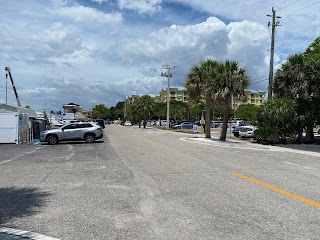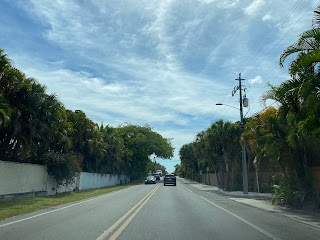As of September 2020 Florida State Road 758 west of US Route 41 on Siesta Key has been relinquished to Sarasota County. I happened to be staying on Siesta Key during June of 2021 and thought it would be an opportune time to see if any signage changes to Florida State Road 758 had occurred (spoiler; there hasn't been any). As an active highway Florida State Road 758 begins at US Route 41 in Sarasota and extends 5.432 miles east to Interstate 75.
Prior to being truncated to US Route 41 the alignment of Florida State Route 758 ("FL 758") began at the western terminus of FL 72 on Siesta Key. FL 758 followed Midnight Pass Road northward to High Avenue. FL 758 followed High Avenue north to Siesta Drive in the fringe City Limits of Sarasota and began an eastward trek towards US Route 41. FL 758 followed Siesta Drive over Bay Island and the Sarasota Bay Bridge to Osprey Avenue. From Osprey Avenue FL 758 followed Bay Road to a junction with US Route 41.
It is unclear when FL 758 on Siesta Key was incorporated into the State Road System. FL 789 can be seen originating from the southern tip of Siesta Key at Midnight Pass and ending at US Route 41/FL 72 on the 1956 Shell Highway Map of Florida It is likely the road network of Siesta Key was added to the State Road System due to the expensive swing bridge structures that existed there at the time. USGS maps show a change in designation from FL 789 to FL 758 occurring at some point between 1992 and 2000.
In 2018 Sarasota County accepted a $40,000,000 dollar road transfer offer with the Florida Department of Transportation. This transfer offer included relinquishing all of FL 758 west of US Route 41 sans the Sarasota Bay Bridge to Sarasota County. The transfer offer between Sarasota County and the Florida Department of Transportation was finalized during September of 2020. Interestingly all FL 758 signage remains active in-field as of June 2021.
Part 2; a drive on former Florida State Road 758 on Siesta Key
FL 758 began from the western terminus of FL 72 which has also been truncated to US Route 41 on Stickney Point Road. West of US Route 41 Stickney Point Road is stilled signed as FL 72 onto Siesta Key. Stickney Point Road crosses the Siesta Key Bridge and terminates at the Midnight Pass Road on Siesta Key. The Siesta Key Bridge was constructed in 1968 as a replacement for an earlier bridge and features a dual bascule draw span design. The Siesta Key Bridge is 567.6 feet in length and is still maintained by the Florida Department of Transportation.
















































































Comments